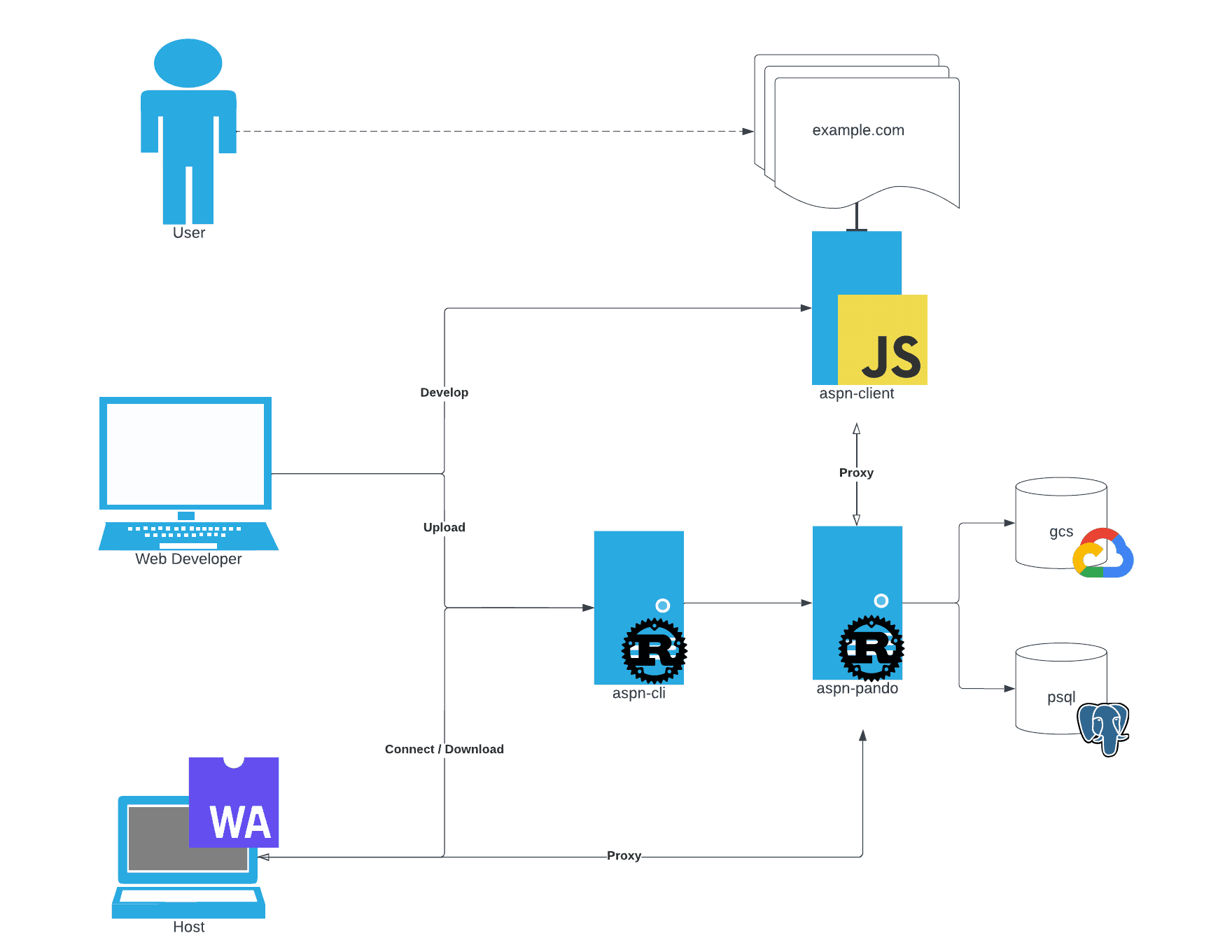
aspn: Volunteer Hosting for Web Applications
Introduction
The field of volunteer computing was inspired by the realization of Moore's Law—computers will continue to get faster and smaller while becoming cheaper, exponentially [ And10 ]. On top of this, developers turn to cloud service providers (CSPs) to host all types of applications from consumer web apps to machine learning models. These hosting solutions are expensive for corporations and unrealistic for a hobbyist. At the same time, we have witnessed an increased interest in decentralization with cryptocurrencies, decentralized autonomous organizations (DAOs), and decentralized apps (dApps) [ Law21 ]. These dApps gain their decentralization by using programs hosted on blockchains like Ethereum and Solana to run their business-logic; however, if there is any web component, it is often centrally hosted with a CSP. This poses an opportunity to completely decentralize these new applications and build on the altruistic backbone of volunteer computing.
Inspiration
Most web applications are hosted on large cloud service providers (Google, AWS, Azure). There are over a billion computing devices connected to the internet. Cryptocurrencies, tokenization, and decentralization have gained traction with new types of payments and applications.
Goal
The aspn network aims to combine the rise of decentralization with new technology, such as WebAssembly, to build a platform where developers publish their applications on a decentralized community of hosts. Aspn allows anyone with a device connected to the internet to support their favorite application and earn rewards by hosting microservices.
Implementation

Typical web applications are built with a frontend and a backend. When a internet users accesses a web-page, under the hood, they are downloading and executing the front end code—HTML, CSS, and Javascript files. For security, this frontend code will send requests to an application programming interface (API).
Aspn combines the scalability of microservices to build a network that allows developers to host their backend APIs as microservices, distributed across hosts with personal computing devices. When the developer makes a request to their microservice, the request will be received by the aspn API and then proxied to the correct host. The correct host will be determined by a scalable load balancing algorithm. When a host connects to the aspn network, they are downloading and running a microservice function from the aspn API. To reduce the complexity and make aspn extensible, the network expects microservices in WebAssembly. WebAssembly is a compilation target of many languages and provides speed and security. When the host starts the aspn program, they open a server on their machine that listens for requests. When a request to the microservice is proxied from the aspn API, the WebAssembly function is executed and the result returned. This result gets propagated all the way back to the user of the webpage.
Tools Used
- Rust
Future Work
A tokenization and reward system was not completed by the end of the semester and would be integral to recruiting hosts for the network. Adding a web platform that allows hosts and developers to manage their programs and connections would be great for accessibility of the project Full compatible HTTP interface would be necessary for full-fledged applications.